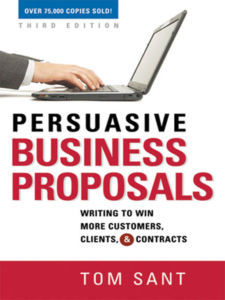Blogging to the Smarter Buyer
”Smart buyers want to gain as much as possible while spending as little as possible,” Tom Sant teaches in his book Persuasive Business Proposals. “If you don’t show them how much they gain by choosing your recommendations, they will inevitably focus on the other half of the equation, spending very little.”
Several of the elements Sant stresses concerning proposals can be especially important in blog marketing:
1. Smart buyers want a business proposal to address their issues or problems right away, giving them assurance that the recommendations will be relevant.
At Say It For You, we emphatically agree. Corporate blog writing for business, will succeed only if two things are apparent to readers, the first or which is that the business owner or professional practitioner understands online searchers’ concerns and needs. That assurance need to find expression early in the blog post content.
2. Smart buyers want clear, specific recommendations tied back to solving those problems.
Buyers need to understand that you and your staff have the experience, the information, the products, and the services to solve exactly those problems and meet precisely those needs. Since, other than the clues offered through the words searchers have chosen to type into the search bar, their individual needs are as yet unknown to you, include anecdotes as examples of common issues that have been solved using your products and expertise.
3. Smart buyers want evidence that the vendor can deliver on time and on budget.
At Say it For You, we realize that having a specific audience in mind and choosing the best evidence for that target audience is crucial.. It’s specific evidence that will resonate with the right audience, including:
- statistics about the problem your product or service helps solve
- your years of experience, degrees, newspaper articles written by or about your business or practice
- testimonials
Choosing the best blog marketing evidence is crucial!





Follow us online!